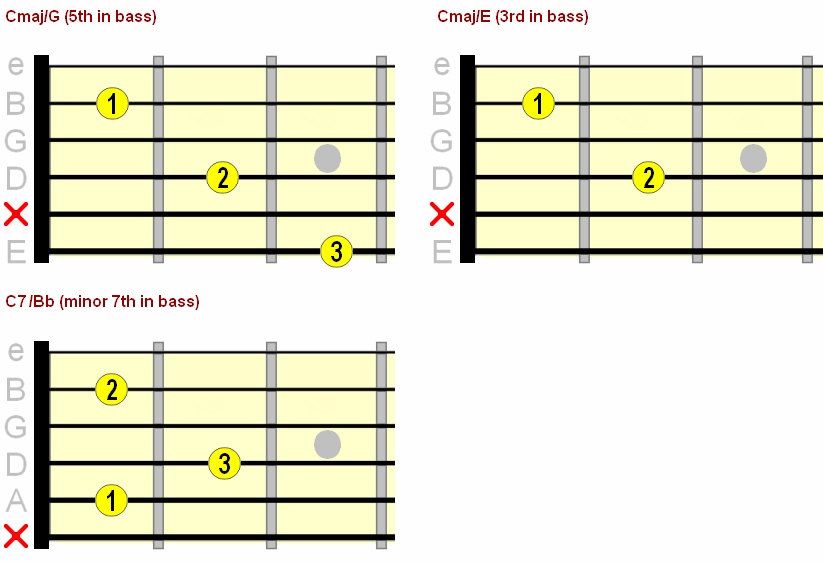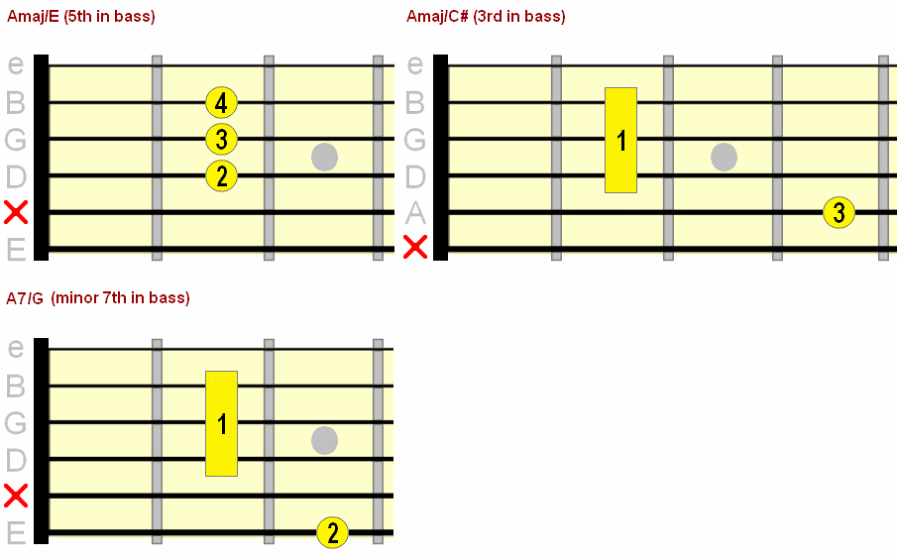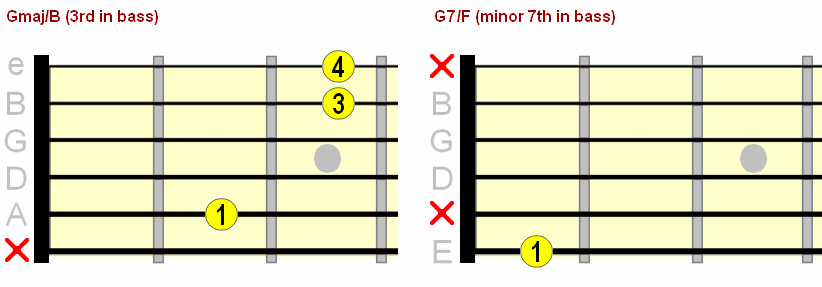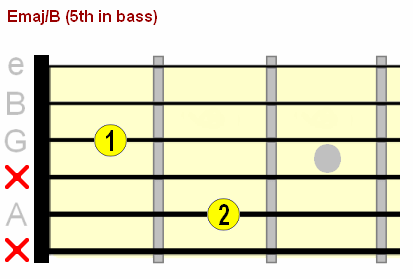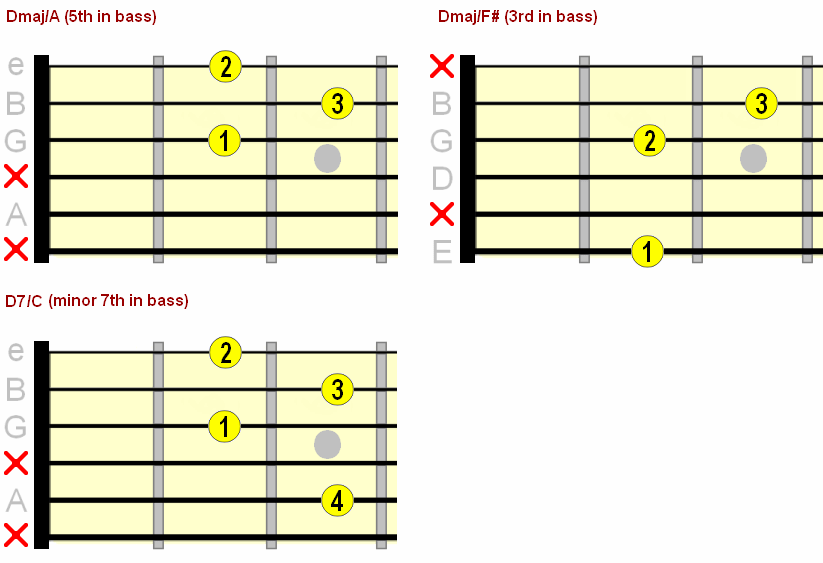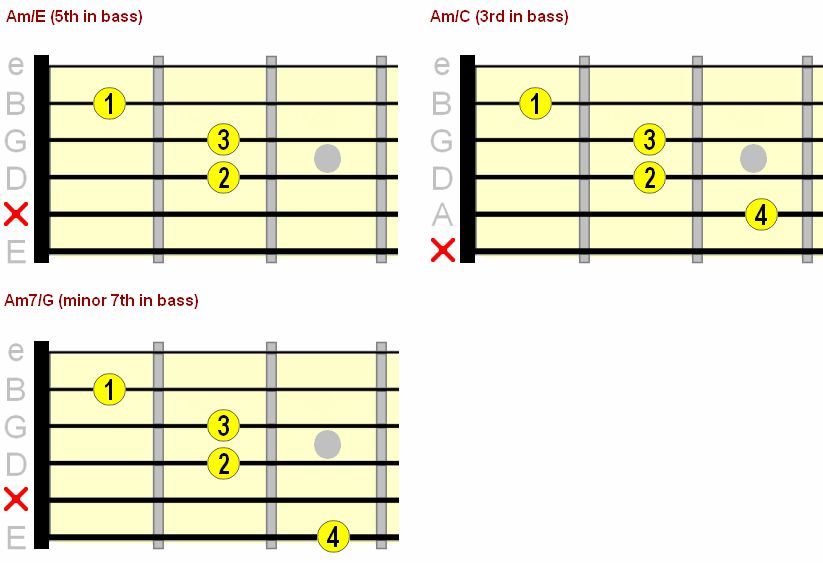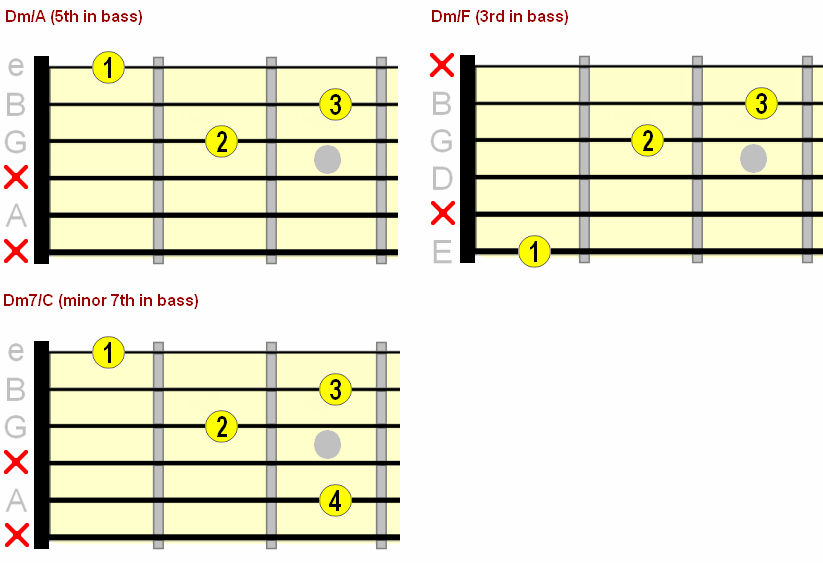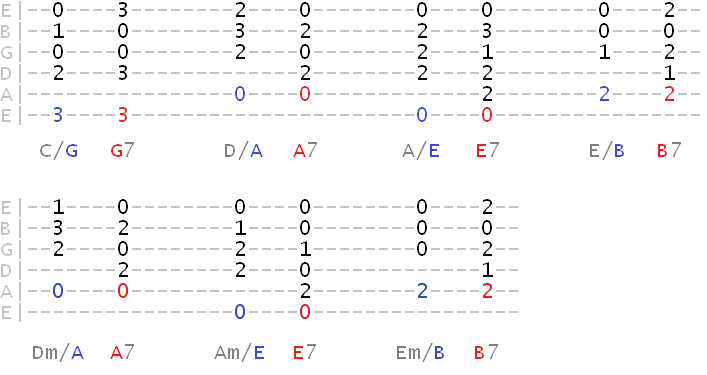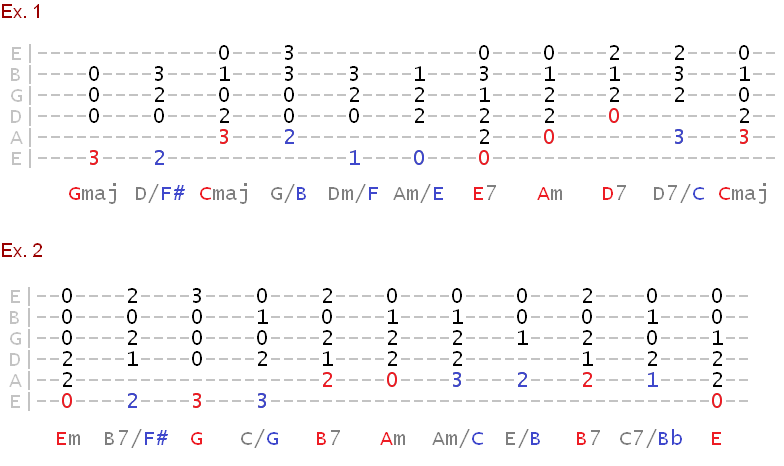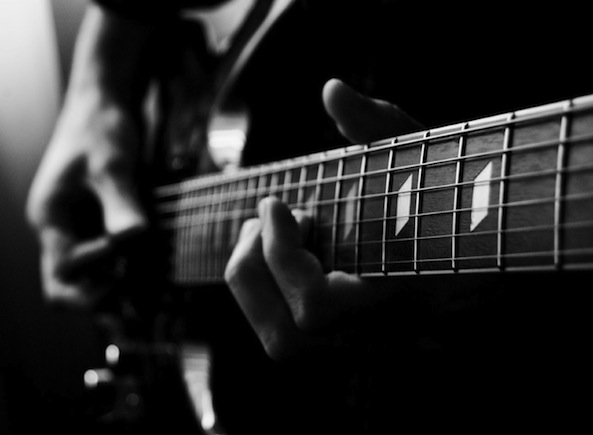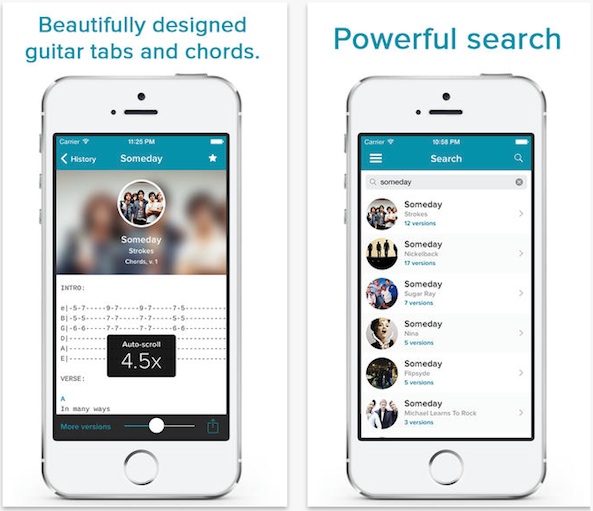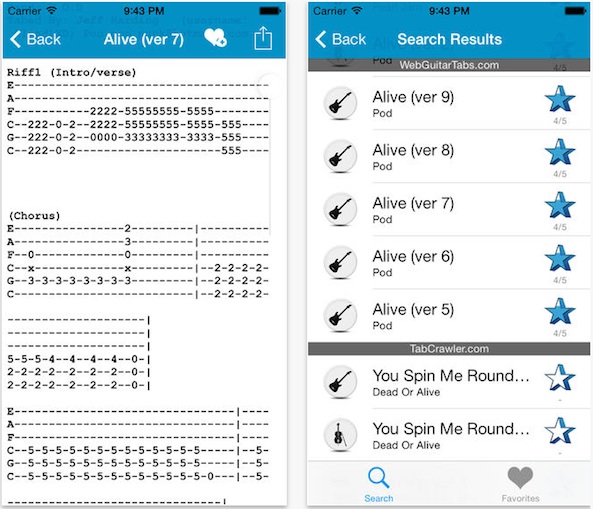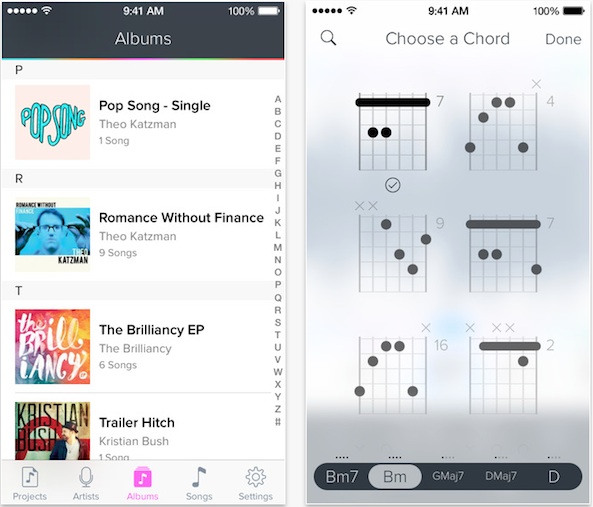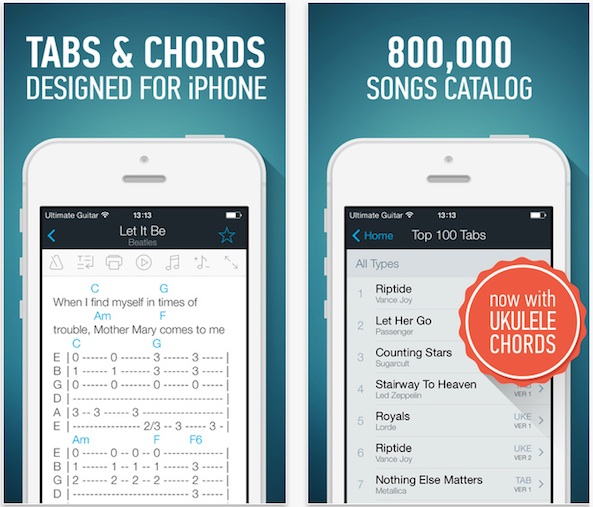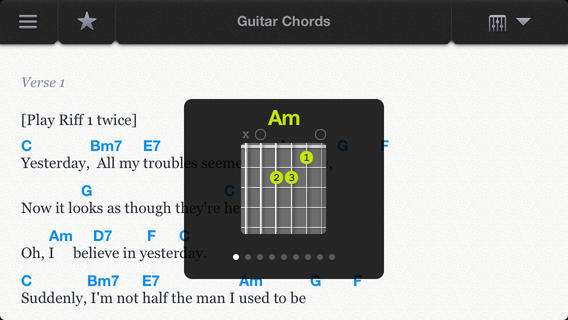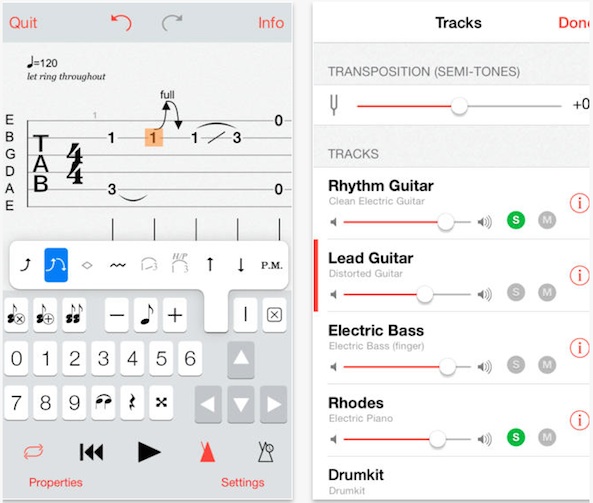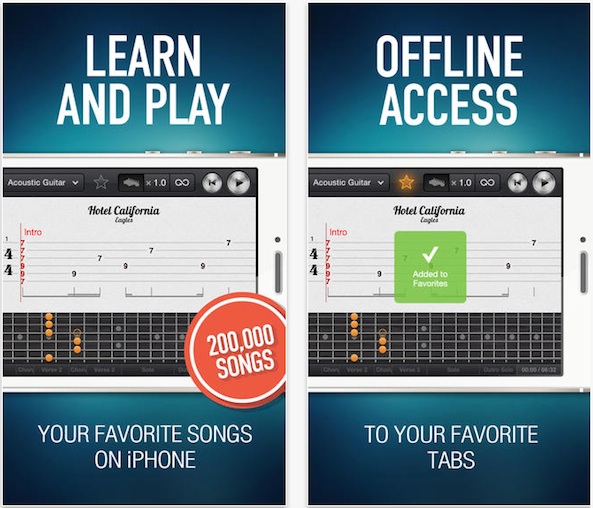Intermediate Jazz Guitar Chord Guide
When learning how to comp and chord solo on guitar in a jazz setting, many of us begin by learning Drop 2 and Drop 3 voicings for the common jazz chords, such as maj7, m7, 7 and m7b5.
Once you have these shapes under your fingers and can apply them to tunes you are studying or jamming on, you might be wondering where is the best place to go next in your study of jazz guitar harmonic shapes.
In this lesson, you'll learn how to build rootless and other Intermediate level jazz guitar chords as you expand beyond R-3-5-7 shapes in your studies.
The chords covered in this lesson include:
- Maj6 Chords
- Maj9 Chords
- 9th Chords
- 7b9 Chords
- 7b13 Chords
- 7b9b13 Chords
- m9th Chords
- m6th Chords
- mMaj9 Chords
- m11b5 Chords
If you enjoy this lesson, you will also dig these other Intermediate level jazz guitar guides:
Don't forget to download your FREE Jazz Guitar eBook!
What Are Intermediate Jazz Guitar Chords?
At this point you may be asking yourself, "What exactly are Intermediate Jazz Guitar chords?"
For me, I consider any rootless voicing to be placed in this category, which you will explore in this lesson.
As well, any voicing were you alter a basic fingering to produce a new sound would be at the Intermediate level for me, also covered in this lesson.
Rootless chords are used by every great jazz guitarist, such as Wes Montgomery, Jim Hall, Joe Pass, Pat Metheny, and anyone else you can really think of.
Though the concept may sound advanced, it can be broken down into a basic theory that is then applied to each chord in your vocabulary.
At it's simplest level, rootless chords are chords were you take the root and you replace it with another note from the diatonic scale, in most cases during this lesson that note will be a 9th of some kind.
This means that if you want to take a Cmaj7 chord and turn it into a rootless Cmaj9 chord, you would replace the root with the 9th.
- Cmaj7 – C-E-G-B (R-3-5-7)
- Cmaj9 – D-E-G-B (9-3-5-7)
By using this replacement method to build extended chord shapes, such as 9ths or 13ths, you are altering a chord shape you already know to produce a new voicing, rather than starting from scratch and learning a whole new set of shapes on the fretboard.
As well, you can keep the root in a chord and replace another chord tone, such as taking a Cmaj7 chord and replacing the 7th with a 6th to form a C6 chord.
- Cmaj7 – C-E-G-B (R-3-5-7)
- C6 – C-E-G-A (R-3-5-6)
Again, this allows you to play a new chord voicing by altering a shape you already know, rather than going back to the drawing board in your jazz chord study.
In this lesson you will learn how to alter various notes in a chord, mostly the R, 5th and 7th, to form new shapes that you can then take to your jazz comping, chord melody and chord soloing situations.
If you are a bit unsure about the basic shapes for these chords, or just want a refresher on R-3-5-7 chord shapes, please check out these intro lessons as they will be helpful.
After you have done a bit of review, or if you already have these basic chords under your fingers, you're ready to dive in and begin your study of Intermediate Jazz Guitar Chords on the fretboard.
Maj6 Chords
The first chords that we'll explore are maj6 chords, often notated as 6 for the short form.
These chords are built by taking any maj7 voicing you know and lowering the 7th by a tone to replace it with the 6th, producing the chord tones R-3-5-6.

To begin, here are Drop 3 Maj6 chords with the lowest note on the 6th string.

Here are Drop 3 Maj6 chords with the lowest note on the 5th string.

We'll now move on to Drop 2 Maj6 chords with the lowest note on the 5th string.

Finally, here are Drop 2 Maj6 chords with the lowest note on the 4th string.

Once you have these Maj6 chords under your fingers on any string set, make sure to mix them together as you begin to move between string sets and inversions in your comping and chord soloing phrases.
Rootless Maj9 Chords
Here, you will explore your first rootless chord shape as you take any maj7 chord you know and raise the root by a tone to produce a maj9 chord shape, 9-3-5-7.
Though you are not playing the root in the chord shape, it can be helpful to visualize the root note in order to be able to move these shapes around the fretboard quickly and easily.

To begin, here are Drop 3 Rootless Maj9 chords with the lowest note on the 6th string.

Here are Drop 3 Rootless Maj9 chords with the lowest note on the 5th string.

We'll now move on to Drop 2 Rootless Maj9 chords with the lowest note on the 5th string.

Finally, here are Drop 2 Rootless Maj9 chords with the lowest note on the 4th string.

Once you have these Maj9 chords under your fingers on any string set, make sure to mix them together as you begin to move between string sets and inversions in your comping and chord soloing phrases.
Rootless 9th Chords
You can now move on to replacing the root note of any 7th chord to produce a rootless 9th chord in your studies, 9-3-5-b7.
Again, feel free to play the 7th shape first, then the rootless shape, going back and forth a bit until you are used to grabbing the rootless chord without the aid of the original 7th shape on the guitar.

To begin, here are Drop 3 Rootless 9 chords with the lowest note on the 6th string.

Here are Drop 3 Rootless 9 chords with the lowest note on the 5th string.

We'll now move on to Drop 2 Rootless 9 chords with the lowest note on the 5th string.

Finally, here are Drop 2 Rootless 9 chords with the lowest note on the 4th string.

Once you have these rootless 9 chords under your fingers on any string set, make sure to mix them together as you begin to move between string sets and inversions in your comping and chord soloing phrases.
Rootless 13th Chords
You are now going to take the chord shapes you just learned, 9th chords, and replace the 5th by a note one tone higher to form a rootless 13th shape, 9-3-13-b7.
When building a rootless 13th chord, you can also start with a 7th chord and replace the root by a note one tone higher, then do the same to the 5th, replacing it with a note one tone higher.
Either way will work, so whichever is easiest for you will be fine. Try both methods out and see which one works best for you before integrating it into your thinking and playing.

To begin, here are Drop 3 Rootless 13 chords with the lowest note on the 6th string.

Here are Drop 3 Rootless 13 chords with the lowest note on the 5th string.

We'll now move on to Drop 2 Rootless 13 chords with the lowest note on the 5th string.

Finally, here are Drop 2 Rootless 13 chords with the lowest note on the 4th string.

Once you have these rootless 13th chords under your fingers on any string set, make sure to mix them together as you begin to move between string sets and inversions in your comping and chord soloing phrases.
Rootless 7b13(#5) Chords
We will now move on to the first 7alt chord sound in this lesson, where you take a 13th chord and lower the 13th by one fret to produce a 7b13 voicing, 9-3-b13-b7.
You can use this chord shape over several chord symbols in a lead sheet, so I've used the symbol I think you would see the most when reading a jazz tune.
Just to help out, you could also use this chord shape when you see the chords:

To begin, here are Drop 3 Rootless 7b13 chords with the lowest note on the 6th string.

Here are Drop 3 Rootless 7b13 chords with the lowest note on the 5th string.

We'll now move on to Drop 2 Rootless 7b13 chords with the lowest note on the 5th string.

Finally, here are Drop 2 Rootless 7b13 chords with the lowest note on the 4th string.

Once you have these rootless 7b13 chords under your fingers on any string set, make sure to mix them together as you begin to move between string sets and inversions in your comping and chord soloing phrases.
Rootless 7b9 Chords
You can also alter the 9th of any rootless 9th chord voicing by lowering that note a half-step to produce a rootless 7b9 shape on the guitar, b9-3-5-b7.
Again, you can think of this shape as a 7th chord with the root raised by a fret, or a rootless 9th chord with the 9th lowered by a fret, whichever works for you will be fine.

To begin, here are Drop 3 Rootless 7b9 chords with the lowest note on the 6th string.

Here are Drop 3 Rootless 7b9 chords with the lowest note on the 5th string.

We'll now move on to Drop 2 Rootless 7b9 chords with the lowest note on the 5th string.

Finally, here are Drop 2 Rootless 7b9 chords with the lowest note on the 4th string.

Once you have these rootless 7b9 chords under your fingers on any string set, make sure to mix them together as you begin to move between string sets and inversions in your comping and chord soloing phrases.
Rootless 7(b9,b13) Chords
The last 7alt chord we'll look at mixes the previous two, as you now lower the 13th by a half-step and the 9th by a half-step to form a rootless 7(b9,b13) chord, b9-3-b13-b7.
This one can be tricky to get under your fingers, so work on the 7b9 and 7b13 shapes first, then learning these 7(b9,b13) chord voicings will just be a matter of combining the two on the fretboard.

To begin, here are Drop 3 Rootless 7(b9,b13) chords with the lowest note on the 6th string.

Here are Drop 3 Rootless 7(b9,b13) chords with the lowest note on the 5th string.

We'll now move on to Drop 2 Rootless 7(b9,b13) chords with the lowest note on the 5th string.

Finally, here are Drop 2 Rootless 7(b9,b13) chords with the lowest note on the 4th string.

Once you have these rootless 7(b9,b13) chords under your fingers on any string set, make sure to mix them together as you begin to move between string sets and inversions in your comping and chord soloing phrases.
m6 Chords
We'll now move on to minor chords by taking a m7th and lowering the b7 by a half-step to produce a m6 voicing, R-b3-5-6.
Just like the maj6 chord shapes, you will keep the root in these voicings, as the replacement note is the b7 allowing you to maintain the root in each shape.

To begin, here are Drop 3 Rootless m6 chords with the lowest note on the 6th string.

Here are Drop 3 Rootless m6 chords with the lowest note on the 5th string.

We'll now move on to Drop 2 Rootless m6 chords with the lowest note on the 5th string.

Finally, here are Drop 2 Rootless m6 chords with the lowest note on the 4th string.

Once you have these m6 chords under your fingers on any string set, make sure to mix them together as you begin to move between string sets and inversions in your comping and chord soloing phrases.
Rootless m9 Chords
The next minor chord we'll look at involves taking a m7 chord voicing and raising the root by a tone to form a rootless m9 chord shape, 9-b3-5-b7.
Keep working on visualizing the root note, though you aren't playing it in any of these chords, as well as moving between the m7 and m9 shapes in order to develop a better sense of how to find these shapes on the fretboard in any inversion or in any key.

To begin, here are Drop 3 Rootless m9 chords with the lowest note on the 6th string.

Here are Drop 3 Rootless m9 chords with the lowest note on the 5th string.

We'll now move on to Drop 2 Rootless m9 chords with the lowest note on the 5th string.

Finally, here are Drop 2 Rootless m9 chords with the lowest note on the 4th string.

Once you have these rootless m9 chords under your fingers on any string set, make sure to mix them together as you begin to move between string sets and inversions in your comping and chord soloing phrases.
Rootless mMaj9 Chords
The last minor chord type we'll explore in this lesson involves taking a mMaj7 chord and raising the root by a tone to form a rootless mMaj9 chord, 9-b3-5-7.
This shape can sound a bit harsh at first, but with time it will settle in your ears and be a nice addition to your jazz guitar chord vocabulary, so stick with it and see where it fits into your comping vocabulary.

To begin, here are Drop 3 Rootless mMaj9 chords with the lowest note on the 6th string.

Here are Drop 3 Rootless mMaj9 chords with the lowest note on the 5th string.

We'll now move on to Drop 2 Rootless mMaj9 chords with the lowest note on the 5th string.

Finally, here are Drop 2 Rootless mMaj9 chords with the lowest note on the 4th string.

Once you have these rootless mMaj9 chords under your fingers on any string set, make sure to mix them together as you begin to move between string sets and inversions in your comping and chord soloing phrases.
Rootless m11b5 Chords
The last chord you'll learn in this article involves taking a m7b5 (half-diminished) chord and raising the 3rd by a tone to form a m11b5 chord shape, R-11-b5-b7.
As this chord doesn't have the b3rd in it, it can be a bit ambiguous. But, with practice you'll be able to add it to your minor ii-V-I comping ideas as well as chord soloing phrases when you encounter a m7b5 symbol in any given tune.

To begin, here are Drop 3 Rootless m11b5 chords with the lowest note on the 6th string.

Here are Drop 3 Rootless m11b5 chords with the lowest note on the 5th string.

We'll now move on to Drop 2 Rootless m11b5 chords with the lowest note on the 5th string.

Finally, here are Drop 2 Rootless m11b5 chords with the lowest note on the 4th string.

Once you have these m11b5 chords under your fingers on any string set, make sure to mix them together as you begin to move between string sets and inversions in your comping and chord soloing phrases.
Intermediate Major ii V I Exercises
One of the best ways to bring these shapes to your playing in a musical fashion is to work on ii V I progressions.
You can focus on a specific voicing for each chord, or move between various shapes, whatever challenges you in the woodshed is cool.
Here is an example of how you would take chords from this lesson and apply them to a major ii V I VI chord progression in the key of C.
Click to hear Intermediate Jazz Chords 1

And here is an example of a chord-soloing phrase that mixes up various shapes from this lesson.
Click to hear Intermediate Jazz Chords 1

After learning these two examples, try taking any shapes you've learned so far in this lesson and comping over a major ii V I VI progression, starting in C then in all keys, as you begin to take these shapes into a practical, musical situation.
Intermediate Minor ii V I Exercises
As well, you can apply these chord shapes to a minor key ii-V-I-vi progression.
Here is an example of how to comp over a C minor progression using various chords from this lesson.
Click to hear Intermediate Jazz Chords 1

And here is an example of how to create a chord soloing phrase over those same changes.
Click to hear Intermediate Jazz Chords 1

Again, try taking any shapes you've learned from this lesson and comp/solo with them over minor key progressions as you begin to apply these shapes to common harmonic movements in the woodshed.
Do you have a question about these Intermediate Jazz Guitar Chords? Share your thoughts in the comments section below.



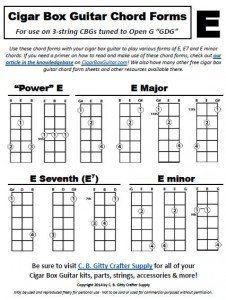

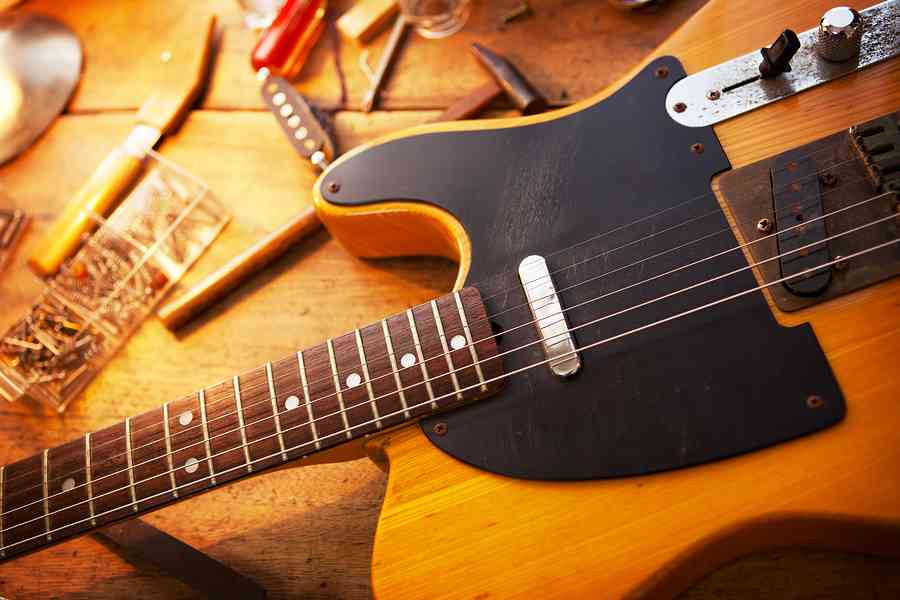 The dominant 7th chord is the most common used chord in blues.
The dominant 7th chord is the most common used chord in blues.



